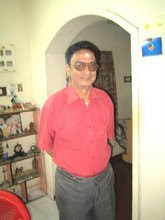
The Red Fort of India
No introduction is needed for The Red Fort or the Lal Quila, the largest monument in Delhi, but this historical monument has now another recognition. This World Heritage Site is now one of the Seven Wonders of India as declared by the Government of India and India’s TV channel NDTV. Even before its notification as a monument of national importance in the year 1913, efforts were made to preserve and conserve the Red Fort, for posterity.
This fort is located in the northeast corner of the original city of Shahjahanabad, the new capital of the fifth Mughal Emperor Shah Jahan who started this project in 1638 and completed in 1648. Halls of public and private audience, doomed and arched marble places, exquisite private apartments, a mosque, and gardens speak volumes about the planning. It has withstood the onslaught by the Persian Emperor Nadir Shah in 1739 and by the British soldiers during war of Independence in 1857.
The imposing Lahore Gate, which faces the city of Lahore in Pakistan is the entrance to this fort. Of note, this gate is the venue of many important speeches by India’s freedom fighters and national leaders. The Meena bazaar, the shopping center for the royal ladies functioned near the Chatta Chowk. The southern end of this street is the Delhi Gate.
This fort houses the Diwan-i-Anor or the Hall of Public Audience. This contained several precious stones, which were looted after the 1857 mutiny. The Diwan-i-Khas or the Hall of Private Audience had the Peacock Throne, which too found its way out to Iran by Nadir Shah in 1739. Though bereft of its original glory due to looting, the Diwan-i-Khas still contains the famous Persian couplet “"If on earth be an earth, it is here, it is here and none but this". The art work here is a synthesis of Persian, Indian, and European art resulting in an unique Shahjahani style.
No introduction is needed for The Red Fort or the Lal Quila, the largest monument in Delhi, but this historical monument has now another recognition. This World Heritage Site is now one of the Seven Wonders of India as declared by the Government of India and India’s TV channel NDTV. Even before its notification as a monument of national importance in the year 1913, efforts were made to preserve and conserve the Red Fort, for posterity.
This fort is located in the northeast corner of the original city of Shahjahanabad, the new capital of the fifth Mughal Emperor Shah Jahan who started this project in 1638 and completed in 1648. Halls of public and private audience, doomed and arched marble places, exquisite private apartments, a mosque, and gardens speak volumes about the planning. It has withstood the onslaught by the Persian Emperor Nadir Shah in 1739 and by the British soldiers during war of Independence in 1857.
The imposing Lahore Gate, which faces the city of Lahore in Pakistan is the entrance to this fort. Of note, this gate is the venue of many important speeches by India’s freedom fighters and national leaders. The Meena bazaar, the shopping center for the royal ladies functioned near the Chatta Chowk. The southern end of this street is the Delhi Gate.
This fort houses the Diwan-i-Anor or the Hall of Public Audience. This contained several precious stones, which were looted after the 1857 mutiny. The Diwan-i-Khas or the Hall of Private Audience had the Peacock Throne, which too found its way out to Iran by Nadir Shah in 1739. Though bereft of its original glory due to looting, the Diwan-i-Khas still contains the famous Persian couplet “"If on earth be an earth, it is here, it is here and none but this". The art work here is a synthesis of Persian, Indian, and European art resulting in an unique Shahjahani style.
Diwan-i-Aam was the house for public imperial audience. Nahr-i-Behisht or the Stream of Peace consisted of imperial private apartments. While Islamic prototypes planning was adopted, Hindu influence is evident, which is characteristic of Mughal building. Zenana, or the women’s quarters, the Mumtaz Mahal (now a museum), and the Rang Mahal are some other notable sites inside the Red Fort.
The Khaz Mahal housed imperial chambers including a suite of bedrooms, prayer rooms, and The Mussaman Burj, a tower from where the emperor presented himself to the daily public view. The Moti Masjid later became the private mosque, the Hayat Raksh Bagh.
Bahadur Shah Zafar was tried by the British for the Sepoy Mutiny of 1857. In 1945, three Indian National Army officers were court-martialed here. After 46 years of Army control, the Red Fort is now under the control of the Indian tourist authorities.
The Red Fort is the historic site from where India’s Prime Minister addresses the nation on the Independence Day.
Source: Google
Images: Google















